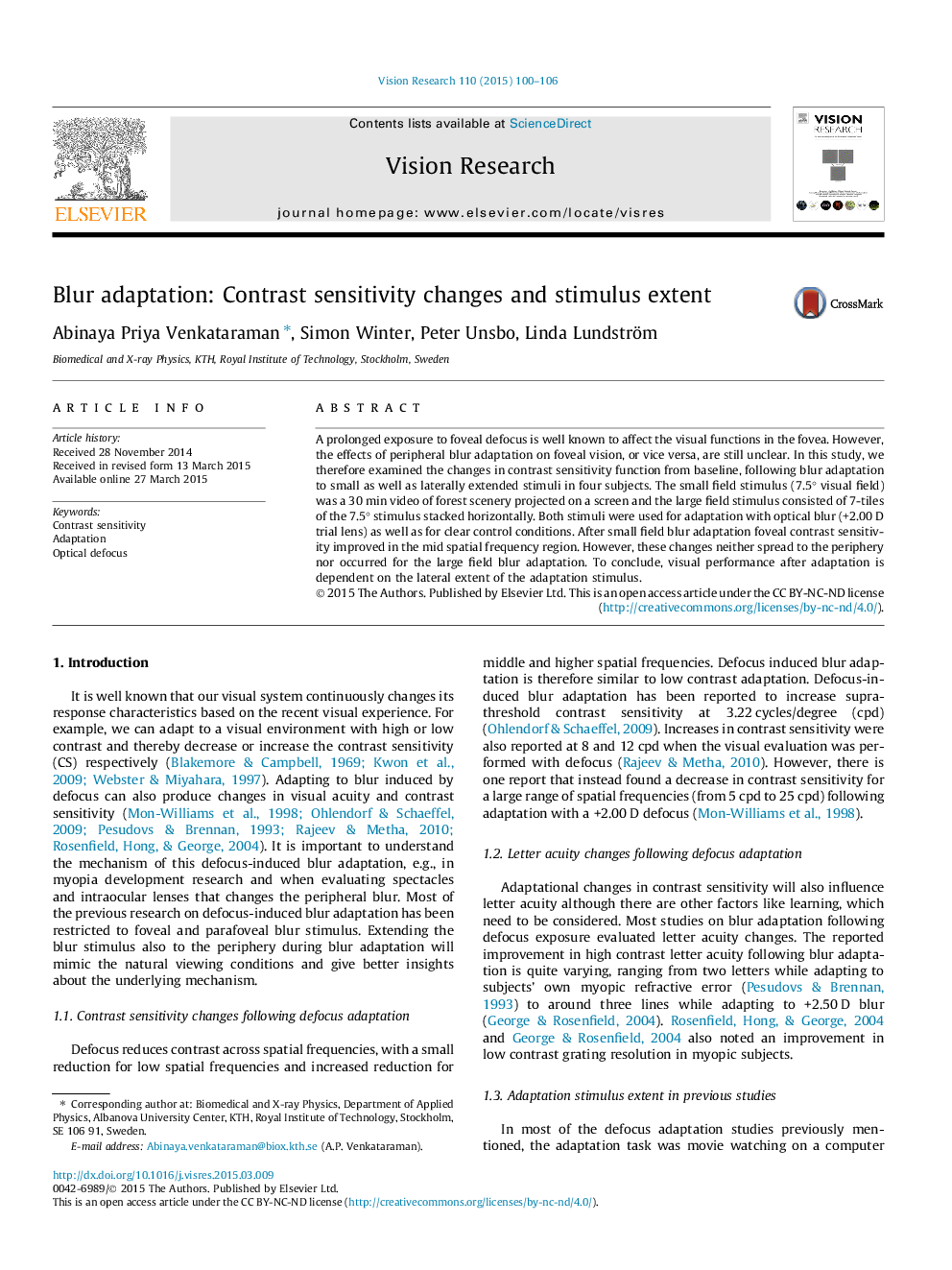| Article ID | Journal | Published Year | Pages | File Type |
|---|---|---|---|---|
| 6203230 | Vision Research | 2015 | 7 Pages |
â¢Contrast sensitivity changes evaluated for defocus-induced blur adaptation.â¢Contrast sensitivity increased for small adaptation stimulus.â¢No changes in contrast sensitivity when the adaptation stimulus is extended.
A prolonged exposure to foveal defocus is well known to affect the visual functions in the fovea. However, the effects of peripheral blur adaptation on foveal vision, or vice versa, are still unclear. In this study, we therefore examined the changes in contrast sensitivity function from baseline, following blur adaptation to small as well as laterally extended stimuli in four subjects. The small field stimulus (7.5° visual field) was a 30 min video of forest scenery projected on a screen and the large field stimulus consisted of 7-tiles of the 7.5° stimulus stacked horizontally. Both stimuli were used for adaptation with optical blur (+2.00 D trial lens) as well as for clear control conditions. After small field blur adaptation foveal contrast sensitivity improved in the mid spatial frequency region. However, these changes neither spread to the periphery nor occurred for the large field blur adaptation. To conclude, visual performance after adaptation is dependent on the lateral extent of the adaptation stimulus.
